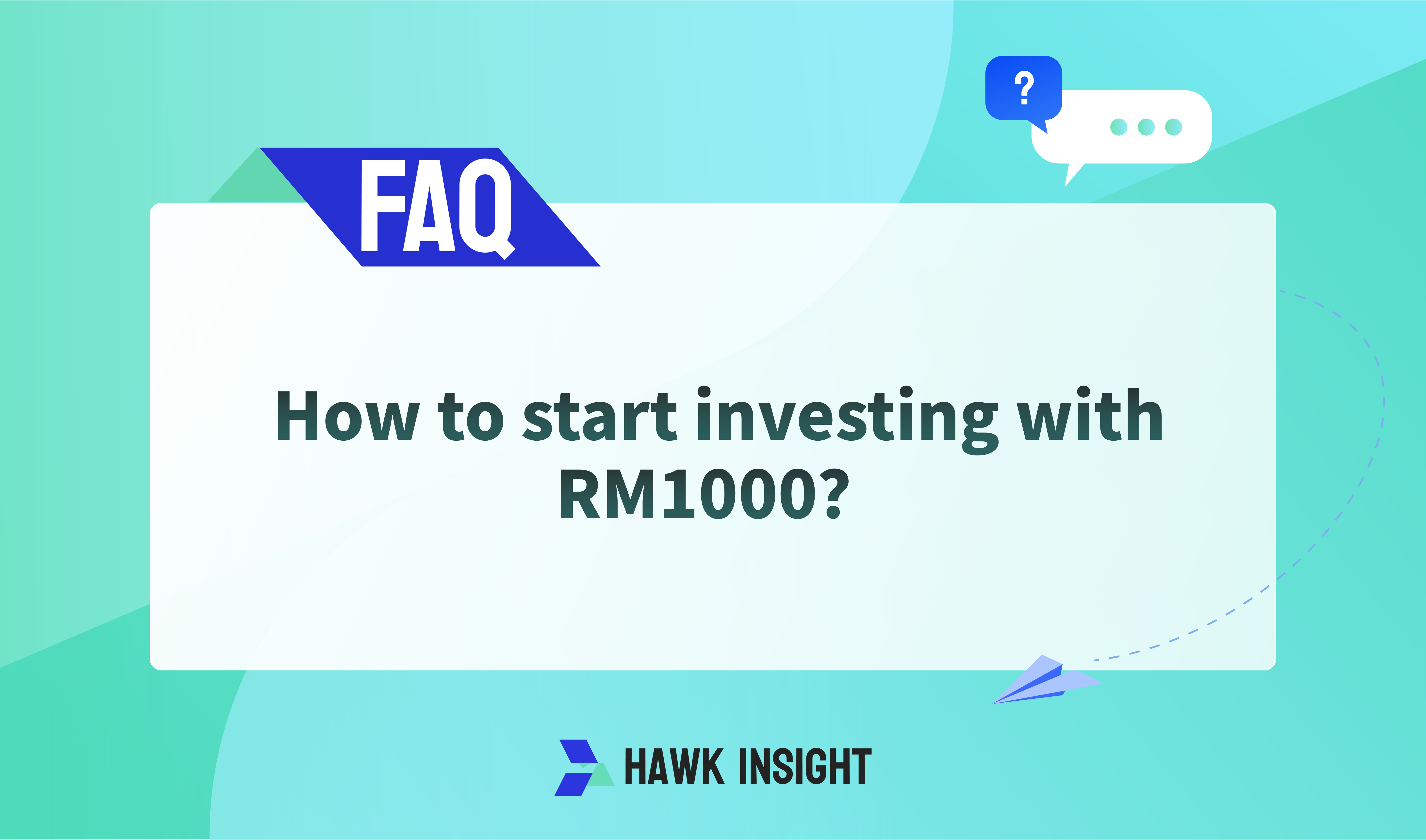How to start investing with RM1000?Explain 5 financial products that Malaysians can also invest in
I want to start investing but I don't know how to start?In this article details how newcomers to investing in Malaysia can start investing with the RM1000.By analyzing the risk of each investment project, the size of the required principal and the investment method to introduce the RM1000 can start to invest in the project.After understanding each investment project, you can better choose the right investment project according to your own situation and preference.

Young investors in Malaysia often mistakenly believe that they need a large amount of capital to start investing. However, in reality, even small amounts of funds, such as RM1000, can be utilized in various investment avenues within Malaysia's financial markets. Below are several financial products suitable for small-scale investors, along with how to utilize them to embark on your journey of financial management.
1.Employees Provident Fund (EPF)
- Investment Threshold: Minimum RM50
- Risk Level: Low
- Investment Channels: Automatic deductions by employers or self-deposits via i-Saraan
- Features: Offers an annualized return of approximately 5%-6%, provides tax relief, but liquidity is relatively poor.
2.Unit Trusts
- Investment Threshold: Minimum RM100
- Risk Level: Medium
- Investment Channels: Purchasing through brokers, banks, or online platforms like FSMone
- Features: Professionally managed, diversifies investment risk, good liquidity, but entails management fees.
3.Exchange-Traded Funds (ETFs)
- Investment Threshold: Depends on individual stock price, no fixed minimum investment amount
- Risk Level: Medium to High
- Investment Channels: Purchasing through investment platforms like Rakuten Trade
- Features: Low investment threshold, high liquidity, suitable for long-term and dollar-cost averaging investment strategies.
4.Fixed Deposits
- Investment Threshold: Minimum RM100
- Risk Level: Risk-free
- Investment Channels: Bank counters or online banking
- Features: High security, low liquidity, relatively low returns, suitable for emergency fund reserves.
5.Stock Investments
- Investment Threshold: Depends on individual stock price, no fixed minimum investment amount
- Risk Level: High
- Investment Channels: Purchasing through brokerage accounts
- Features: High risk, high returns, strong liquidity, suitable for investors with some knowledge of investment and risk tolerance.
Three Steps Before Investing:
1.Self-assessment
- Assess your risk tolerance: Evaluate how much investment volatility you can withstand without affecting your life and emotions.
- Investment goals: Clarify the ultimate purpose of your investments, such as buying a house, education, retirement, etc.
- Investment horizon: Determine the time frame for your investments, whether short-term or long-term.
- Liquidity needs: Assess the liquidity of funds you may need during the investment period.
Based on these assessments, set realistic investment goals and develop corresponding investment strategies.
2.Establishing an emergency fund
- Emergency fund size: It is generally recommended that the emergency fund size covers 3 to 6 months of living expenses.
- Storage method: Emergency funds should be stored in easily accessible and low-risk accounts, such as current deposits or money market funds.
- Continuous updates: Regularly review and adjust the size of the emergency fund as life circumstances change.
Establishing an emergency fund lays the groundwork for the investment journey, ensuring that you won't be forced to liquidate investment assets in the face of unforeseen circumstances.
3.Building financial knowledge and investment strategy
- Educate yourself: Learn basic financial and investment knowledge through reading books, attending seminars, online courses, etc.
- Market research: Understand the characteristics, risks, and returns of different investment tools, as well as the impact of macroeconomic factors on investments.
- Investment strategy: Based on the results of self-assessment, develop an investment strategy that suits your situation, including asset allocation, market entry timing, etc.
- Continuous learning: The investment field is constantly changing, and continuous learning and adaptation to market changes are key to successful investing.
Additionally, consider consulting a financial advisor, especially for beginners. Professional advice can provide valuable guidance and assistance.
Conclusion:
Malaysian investors do not need huge capital to start investing. By understanding and selecting appropriate financial products, even RM1000 can become the starting point for financial management. It is important for investors to develop a reasonable investment plan based on their actual circumstances to achieve steady wealth growth. Additionally, regularly review and adjust investment portfolios to adapt to market changes and changes in personal financial goals.
Disclaimer: The views in this article are from the original Creator and do not represent the views or position of Hawk Insight. The content of the article is for reference, communication and learning only, and does not constitute investment advice. If it involves copyright issues, please contact us for deletion.